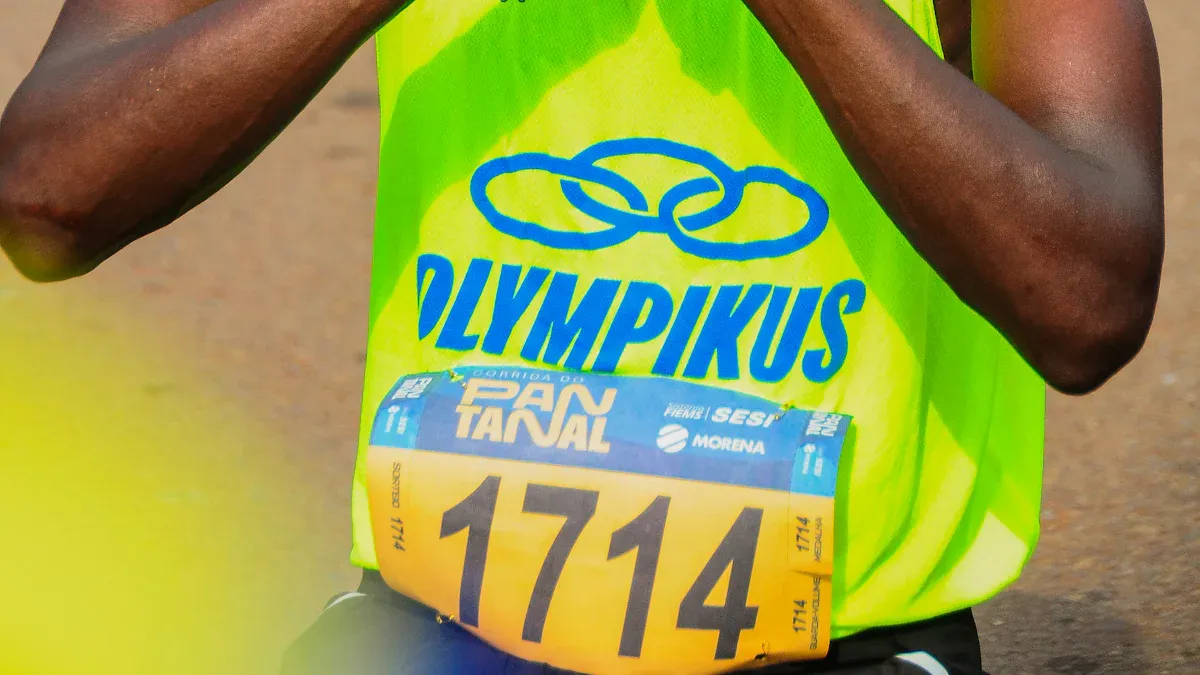2025 Sees Renewed Controversy Over Transgender Athletes in Sports

The debate over transgender athletes in sports has taken center stage again in 2025. You’ve probably noticed the heated discussions about whether transgender athletes be banned from girls’ and women’s sports. This question has sparked intense arguments across the country. Recent legislative moves have added fuel to the fire. For instance:
The House passed a bill to bar transgender athletes from joining female sports teams.
The NCAA updated its policy, allowing athletes assigned male at birth to practice with women’s teams but limiting their competition eligibility.
A Senate vote on banning transgender athletes from women’s sports failed to overcome a filibuster.
These developments highlight how deeply divided opinions remain. What’s your take on this? Should fairness in female sports outweigh inclusion, or is there a middle ground?
Key Takeaways
The argument about transgender athletes in sports is growing stronger.
Some people say women's sports are unfair because of physical differences.
Others believe inclusion matters and bans hurt transgender athletes' feelings.
More people now agree with rules limiting transgender athletes in sports.
Future rules might try to mix fairness and inclusion better.
Legislative and Political Landscape in 2025
Key Legislative Actions
State-level bans on transgender athletes
In 2025, state-level legislation targeting transgender athletes has surged. A total of 25 states passed laws banning transgender children from participating in sports that align with their gender identity. These laws, often referred to as "anti-trans measures," aim to preserve competitive fairness in girls’ and women’s sports. However, critics argue that these measures promote discrimination rather than equality.
Here’s a quick look at some key developments:
Action Description | Outcome |
|---|---|
Senate blocks federal ban on transgender athletes in women's sports | Failed to advance due to lack of votes |
25 states enact legislation banning transgender children from participating in sports matching their gender identity | Legislation passed in various states |
Federal-level actions, including executive orders
At the federal level, President Donald Trump signed an executive order barring transgender female athletes from competing in women’s sports. This order, part of the "Preserving Girls’ Sports Act," emphasizes enforcing Title IX protections. It also threatens to withhold federal funding from schools that fail to comply. Supporters of this executive order argue it safeguards fairness in sports participation, but opponents view it as a discriminatory policy that marginalizes transgender girls.
Political and Partisan Dynamics
Role of political parties in shaping the debate
Political parties have played a significant role in shaping the conversation around transgender athletes. Here’s how the debate has unfolded:
The Republican Party has championed the GOP-led bill to bar transgender women and girls from competing in female sports. They frame this as a step toward protecting women’s rights.
The Democratic Party has opposed such legislation, labeling it as harmful to vulnerable populations and a political tactic rather than a genuine concern for fairness.
Political Party | Action | Description |
|---|---|---|
Republican Party | Proposed Bill | Aimed to bar transgender women and girls from competing in female sports, framing it as protecting women's rights. |
Democratic Party | Blocked Bill | Opposed the Republican bill, arguing it harms vulnerable populations and is a political maneuver. |
Statements from key political leaders
Key political leaders have voiced strong opinions on this issue. Some have criticized the bans as unnecessary and harmful. For example:
"These bills are attempting to solve a problem that doesn’t exist. Transgender kids want the opportunity to play sports for the same reasons other kids do: to be a part of a team where they feel like they belong."
Others have emphasized the need to focus on broader issues in women’s sports, such as pay inequality and lack of resources, rather than targeting transgender athletes.
Legal Challenges and Court Decisions
Major lawsuits against transgender athlete bans
The wave of legislation has sparked legal challenges. In February 2025, two transgender high school students in New Hampshire filed a lawsuit against the Trump administration. They argued that the executive order barring transgender female athletes violates the Constitution and Title IX. Additionally, three lawsuits funded by the Independent Council on Women’s Sports (ICONS) have been filed against the NCAA, focusing on transgender athletes competing at the Division I level.
Court rulings and their implications
Recent court rulings have added complexity to the issue. Some courts have questioned the enforcement of Title IX in cases involving transgender athletes. These rulings could reshape how sports participation policies are implemented. However, they also highlight potential negative impacts on the mental health and well-being of transgender athletes, particularly youth.
The legal landscape remains uncertain, but one thing is clear: the debate over transgender athletes in sports is far from over.
Arguments Surrounding Transgender Athlete Bans

Supporters' Arguments
Fairness in girls’ and women’s sports
Supporters of bans on transgender athletes often emphasize the importance of maintaining fairness in girls sports. They argue that allowing transgender girls to compete could disrupt the level playing field that athletic fairness for women depends on. You’ve probably heard concerns about cisgender athletes losing opportunities, like scholarships, to competitors who might have physical advantages. These supporters believe that protecting the integrity of girls sports ensures that all participants have a fair shot at success.
Biological differences and competitive balance
Another key argument revolves around biological differences. Supporters claim that transgender women may retain physical advantages, such as greater muscle mass or lung capacity, even after undergoing hormonal therapy. They point to studies suggesting a 10%–12% performance advantage in certain sports, like running and swimming. This, they say, could lead to an imbalance in competition, making it harder for cisgender women to compete on equal terms.
Opponents' Arguments
Inclusion and equal rights for transgender athletes
On the other side, opponents of these bans argue that transgender athletes deserve the same opportunities as everyone else. They believe that excluding transgender girls from girls sports sends a harmful message and perpetuates discrimination. For many, sports are about more than just winning—they’re about belonging, teamwork, and personal growth. Denying transgender athletes the chance to participate undermines these values.
Criticism of bans as discriminatory
Critics also view these bans as a form of discrimination. They argue that targeting transgender athletes singles them out unfairly and reinforces harmful stereotypes. Instead of focusing on inclusion, these policies create barriers that prevent transgender athletes from enjoying the benefits of sports. Opponents believe that fostering acceptance and understanding is a better path forward.
Expert and Scientific Perspectives
Research on performance and fairness
Research on this topic reveals a complex picture. While transgender athletes aim to compete fairly, studies show that physiological differences, like larger heart size or higher bone density, can impact performance. Hormonal therapy reduces some of these advantages but doesn’t eliminate them entirely. This raises questions about how to balance fairness with inclusion in competitive sports.
Diverging opinions among scientists
Scientists remain divided on this issue. Some argue that biological differences give transgender women an unfair edge in girls sports. Others focus on the social justice aspect, advocating for equal access based on gender identity. This ongoing debate highlights the challenge of creating policies that respect both athletic fairness for women and the rights of transgender athletes.
Public and Organizational Reactions
Public Opinion and Surveys
Trends in attitudes toward transgender athletes
You’ve probably noticed that public opinion on transgender athletes has shifted over the years. Recent surveys reveal some striking trends:
A growing majority—69% of Americans—believe transgender athletes should compete based on their birth gender, up from 62% in 2021.
Support for transgender athletes competing according to their gender identity has dropped from 34% to 26%.
Even among those who personally know a transgender person, support has declined from 40% to 30%.
These numbers suggest that many people feel uneasy about transgender inclusion in sports. Some of this opposition stems from traditional views on femininity and negative attitudes toward LGBTQ individuals.
Regional differences in public opinion
Where you live might also shape your perspective. In more conservative regions, opposition to transgender athletes tends to be stronger. Meanwhile, urban and progressive areas often show greater support for inclusion. These regional differences highlight how cultural and political environments influence opinions on this issue.
Activist and Advocacy Group Responses
LGBTQ+ organizations' opposition to bans
LGBTQ advocacy groups have been vocal in opposing these bans. Stef Strack, founder of Voice in Sport, argues that the issue has been exaggerated. She points out that fewer than 10 transgender athletes currently compete in NCAA sports, making up just 0.002% of participants. Similarly, GLAAD’s CEO, Sarah Kate Ellis, criticized the National Association of Intercollegiate Athletics’ decision to ban transgender athletes, calling it a "baseless and political move" that harms all athletes.
"Biological diversity exists for all athletes, not just trans athletes," LGBTQ advocates argue. They believe these bans unfairly target transgender individuals while ignoring other barriers to fair participation.
Campaigns supporting restrictions in girls’ sports
On the flip side, campaigns supporting restrictions emphasize safety for girls in sports and fairness. Over 25 anti-transgender sports bills have been introduced, with some requiring invasive gender verification exams. These campaigns argue that such measures protect competitive balance but face criticism for promoting trans discrimination and violating privacy.
Reactions from Athletes and Sports Organizations
Statements from prominent athletes
Athletes have weighed in on this debate, and their voices might surprise you. Professional swimmer Erica Sullivan said,
"Transgender athletes should not be denied equal rights. The real threats to women’s sports are sexual abuse, unequal pay, and lack of resources—not transgender girls."
Rugby player Naima Reddick added,
"Trans women aren’t taking over sports. If you want to play and put in the work, you belong here."
NCAA and other sports organizations' policies
The NCAA has updated its policies to navigate this complex issue:
Category | Policy Details |
|---|---|
Athletes can participate regardless of birth sex or gender identity if they meet eligibility requirements. | |
NCAA Women's Sports | Transgender women may practice but cannot compete on women’s teams. |
Hormone Therapy | Athletes on hormone therapy may practice but cannot compete on women’s teams. |
Local Legislation | Schools must follow local, state, and federal laws, which override NCAA rules. |
These policies aim to balance inclusion with fairness, but they’ve sparked debates about discrimination on the basis of sex and the broader discrimination that trans people face.
Tip: Always double-check information to avoid misinformation. Proofreading articles and seeking objective sources can help you stay informed.
Broader Implications for Sports and Transgender Rights

Impact on Women’s Sports and Title IX
Intersection of bans with Title IX protections
You might wonder how these bans connect to Title IX protections. Title IX, introduced in 1972, ensures gender equality in education and sports. In 2016, transgender students gained inclusion under Title IX, allowing participation based on gender identity. However, this changed when the Trump administration rescinded those protections. Now, the debate continues. Some argue that Title IX should protect cisgender women by reserving women’s sports for them. Others believe it should also safeguard the rights of LGBTQ students, including transgender athletes.
Recent legislation has added to the confusion. For example:
25 states have passed laws banning transgender youth from sports aligned with their gender identity.
A 2023 bill in the U.S. House proposed withholding federal funds from schools allowing transgender women in women’s sports.
These actions show how interpretations of Title IX keep shifting, leaving transgender athletes in a tough spot.
Gender equality in sports policies
Bans on transgender athletes raise questions about fairness and equality. While some see these bans as necessary for fair competition, others highlight their harmful effects. Transgender youth often face exclusion, which can hurt their mental health and well-being. Inclusive policies, on the other hand, promote gender equality and support the rights of LGBTQ students.
Future Trends in Sports Policies
Governance and inclusion in sports
The future of sports policies will likely focus on balancing fairness and inclusion. You might see more discussions about creating separate categories for transgender athletes. This could ensure fair competition while respecting everyone’s rights. Sports organizations may also need to rethink how they govern participation to avoid discrimination.
International implications of transgender athlete bans
Globally, these bans could influence how other countries handle similar issues. Some nations might follow the U.S. example, while others could push back, emphasizing inclusion. International sports events, like the Olympics, may face pressure to address these debates, potentially reshaping their policies.
Cultural and Societal Impacts
Broader effects on transgender rights
Transgender athlete bans don’t just affect sports. They also impact broader transgender rights. For example:
Evidence | Implication |
|---|---|
Bans on athletic participation for transgender girls and women | Negative impacts on health and well-being of affected transgender students and athletes, particularly youth and young adults |
These bans can shape public opinions about transgender individuals, influencing policies beyond sports. They also highlight the need for greater awareness of gender diversity in society.
Societal debates on inclusion and fairness
The debate over transgender athletes reflects larger societal questions about inclusion and fairness. Some argue that these bans ignore other factors affecting fairness, like socio-economic status. Others point out that such policies can lead to invasive gender verification procedures, which harm all athletes. You might agree that sports should celebrate diversity, not create barriers.
The ongoing discussion shows how sports can be a mirror for society, reflecting our values and challenges.
The debate over transgender athletes in sports continues to spark strong emotions. On one side, you see arguments about fairness in women’s sports. On the other, there’s a push for inclusion and equal rights. This tension is not new.
Consider the case of Laurel Hubbard, a transgender weightlifter in the Tokyo Olympics. Her participation sparked criticism, with some arguing it gave her an unfair advantage. Fellow athlete Tracey Lambrechs even claimed it deprived other women of opportunities to compete.
These debates could reshape sports policies in the long run.
Federal and state laws might change to clarify participation rules.
Title IX enforcement could shift, potentially limiting inclusivity.
Professional sports organizations may face pressure to exclude transgender athletes.
Beyond sports, this issue influences broader transgender rights. As Schiappa notes, defining transgender status remains complex, especially in polarized political climates. Future discussions could bring both progress and setbacks.
Ultimately, continued dialogue is key. By listening to diverse perspectives, you help create a fair and inclusive environment where all athletes feel valued. Let’s keep the conversation going.
FAQ
What is the main argument for banning transgender athletes in women’s sports?
Supporters believe it’s about fairness. They argue that biological differences, like muscle mass or lung capacity, give transgender women an advantage. This could make competition uneven and impact opportunities for cisgender women, such as scholarships or titles.
Why do opponents call these bans discriminatory?
Opponents say these bans unfairly target transgender athletes. They believe sports should promote inclusion and teamwork, not exclusion. Critics also argue that these policies reinforce harmful stereotypes and ignore the small number of transgender athletes actually competing.
How do scientists view the issue of fairness?
Scientists don’t all agree. Some say biological differences can affect performance, even after hormone therapy. Others focus on the importance of inclusion and argue that sports should prioritize participation over competition. The debate remains ongoing.
Are there alternatives to outright bans?
Yes, some suggest creating separate categories for transgender athletes. Others propose adjusting eligibility rules based on hormone levels. These ideas aim to balance fairness and inclusion, though they come with their own challenges.
How can you stay informed about this debate?
Follow updates from trusted news sources, advocacy groups, and sports organizations. Listening to diverse perspectives helps you understand the complexities. You can also read scientific studies or court rulings to get a clearer picture of the issue.
Tip: Always double-check information to avoid misinformation. Proofreading articles and seeking objective sources can help you stay informed.
